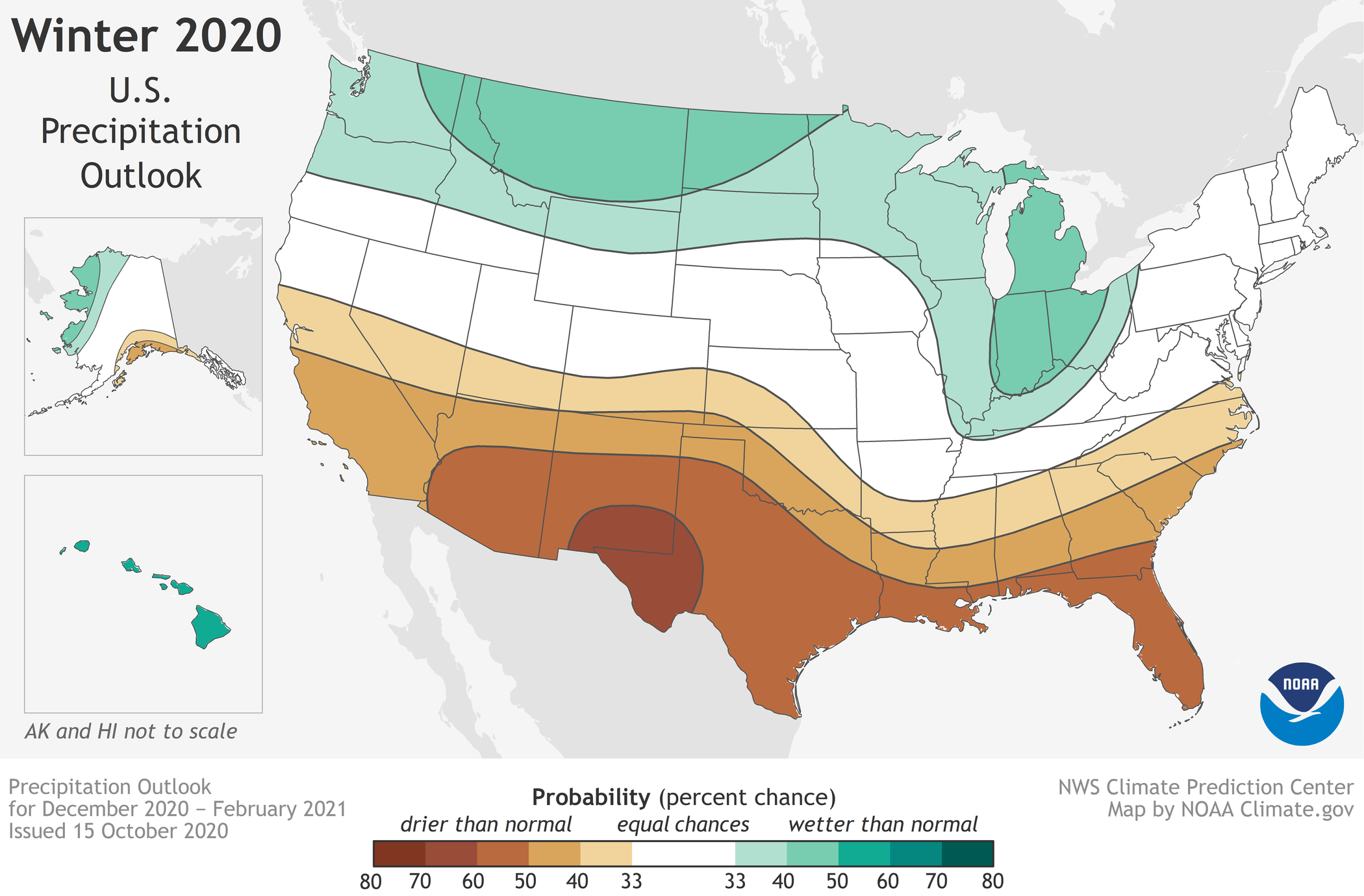What weather should truckers expect this winter?
In its U.S. Winter Outlook, the National Oceanic and Atmospheric Administration is predicting warmer, drier conditions in some regions and cooler, wetter conditions in others.
Recently, NOAA released its U.S Winter Outlook, which forecasts winter conditions throughout the nation. In short, the southern portion of the country should expect warmer, drier weather. Meanwhile, in the northern portion winter will likely be cooler and wetter.
Warmer-than-usual temperatures are expected in the southern half of the United States. A small section of the Upper Midwest and Northwest may experience colder-than-usual temperatures. The warmer weather band also extends all the way up to the Northeast.
More relevant to truckers’ interest is the U.S. Winter Outlook precipitation prediction.
From about central Kansas on down, drier-than-normal conditions are expected. However, norther portions will likely get more precipitation. Particularly, most of Indiana, Montana and North Dakota and large portions of Idaho and Ohio are more likely to experience wetter conditions this winter. Areas commonly known for drier climates will likely remain drier than usual, including the Southwest, Texas, Gulf Coast and Florida.

Despite wetter condition in some areas, the U.S Winter Outlook addresses a drought that is currently affecting large portions of the nation. The West Coast has been hit the hardest with near-record-high temperatures and a slow monsoon season in the Southwest. Affected areas are included in portions expecting drier conditions, exacerbating the drought.
NOAA’s U.S. Winter Outlook is consistent with an ongoing La Nina weather system. Unlike an El Nino weather pattern that is based on warmer ocean water, a La Nina is the opposite, with colder than usual se surface temperatures. The warm-cold back and forth pattern is also referred to as the El Nino-Southern Oscillation pattern or ENSO. The fluctuation between warm to neutral or cold occurs every three to four years, according to NOAA. The current La Nina began in September. La Nina systems last nine to 12 months on average. LL
More winter-related resources:
- U.S. and Canada chain laws.
- Preparing for winter.
- Fight winter driving coercion with traffic cameras.









